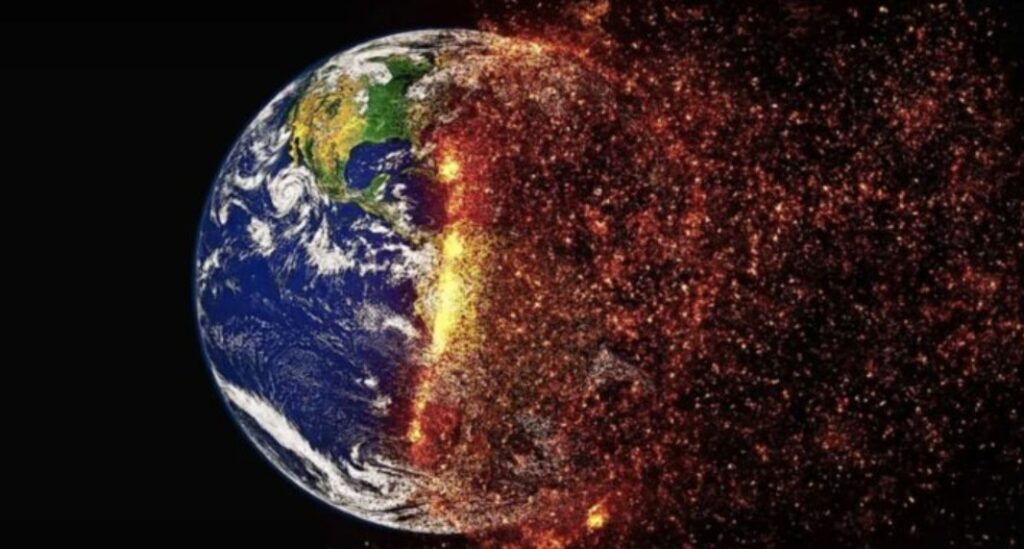Earth’s Oxygen Countdown, Scientists Predict Life Will End in One Billion Years
3 min read
In a landmark study blending planetary science and supercomputing, researchers have pinpointed a sobering milestone for Earth’s future: in roughly one billion years, the planet’s oxygen will vanish, spelling the end for most forms of life as we know them. This prediction, grounded in advanced simulations and published in the journal Nature Geoscience, marks the most precise estimate yet for the lifespan of Earth’s oxygen-rich atmosphere.
The Science Behind the Prediction
A team led by Kazumi Ozaki of Toho University in Japan, in collaboration with NASA’s planetary modeling experts, conducted over 400,000 simulations to chart the evolution of Earth’s atmosphere. Their findings reveal a clear sequence of events driven by the inexorable aging of our Sun:
- Solar Brightening: As the Sun grows older, it will become hotter and more luminous. This increased energy will gradually heat Earth’s surface, causing more water to evaporate and raising global temperatures.
- Disrupted Carbon Cycle: The warming will weaken the planet’s carbon cycle, the process by which plants convert sunlight and carbon dioxide into oxygen. As plants struggle and die off, oxygen production will sharply decline.
- Atmospheric Shift: Once the tipping point is reached, oxygen levels will plummet rapidly-by a million-fold in geological terms-transforming Earth’s atmosphere back to a state rich in methane and poor in oxygen, reminiscent of conditions before the Great Oxidation Event over two billion years ago.
- Extinction of Complex Life: Without oxygen, complex organisms-animals, birds, insects-will vanish. Only hardy, anaerobic microbes will survive, echoing the earliest chapters of life on Earth.
Why Is This Happening?
The root cause is the Sun’s natural life cycle. As it ages, the Sun’s output increases, setting off a cascade of effects on Earth’s climate and atmospheric chemistry. The decline in atmospheric carbon dioxide will eventually choke off photosynthesis, halting the production of oxygen and triggering a rapid atmospheric transformation.
“For many years, the lifespan of Earth’s biosphere has been discussed based on scientific knowledge about the steady brightening of the Sun and global carbonate-silicate geochemical cycle,” explained Kazumi Ozaki, lead author of the study.
How Does This Compare to Previous Estimates?
Earlier models suggested that Earth’s biosphere could persist for up to two billion years, with life ending due to a combination of overheating and a lack of carbon dioxide for photosynthesis. However, this new research narrows the window, predicting that the critical loss of oxygen will occur much sooner-within one billion years-making the planet inhospitable to complex life far earlier than previously thought.
What Happens After Oxygen Disappears?
- Loss of the Ozone Layer: With oxygen gone, Earth’s protective ozone layer will also vanish, exposing any remaining life to the Sun’s harmful ultraviolet radiation.
- A Return to Early Earth Conditions: The atmosphere will revert to a methane-rich state, similar to the planet’s environment before the rise of oxygen-producing organisms.
- Survival of Microbes: Only anaerobic life forms-microbes that do not require oxygen-will be able to endure these harsh conditions, mirroring the ancient world before the Great Oxidation Event.
What Does This Mean for Us?
While the projected timeline is distant-one billion years is far beyond the scope of human civilization-the research underscores the delicate balance that sustains life on Earth. The study also highlights that while climate change remains an urgent, short-term threat measured in centuries, the planet itself faces far longer-term existential changes driven by cosmic forces.
In Summary
- Oxygen will vanish from Earth’s atmosphere in about one billion years due to the Sun’s increasing heat.
- This will trigger the extinction of complex life, leaving only anaerobic microbes.
- The research provides the most precise estimate yet for Earth’s oxygenated lifespan, narrowing previous predictions by a billion years.
- The findings are a stark reminder of Earth’s dynamic, ever-changing nature-and the cosmic forces that ultimately shape our planet’s destiny.
For now, humanity’s challenges remain much more immediate, but the ultimate fate of Earth’s biosphere is now clearer than ever, thanks to the power of modern science and supercomputing





